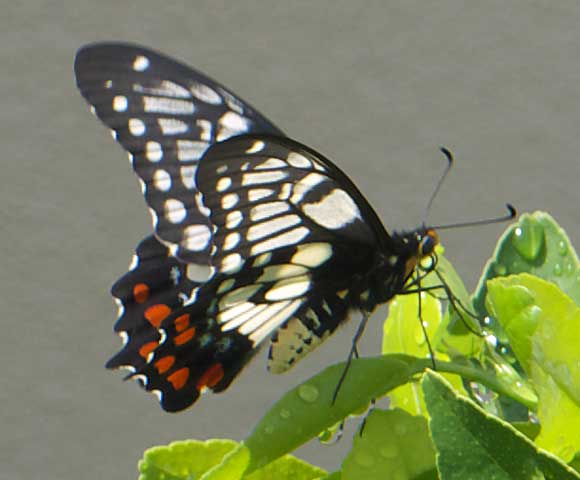The Dainty or Dingy Swallowtail – Papilio anactus – is the most common and numerous swallowtail in this area. Anyone from Wagga to Albury and probably beyond who grow any citrus will find this butterfly and it’s caterpillars in their trees. The caterpillars can become so numerous they can totally strip a small citrus of all it’s leaves.
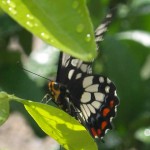
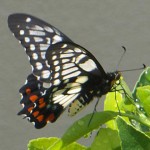
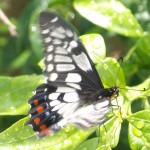
The butterfly is quite striking, with it’s black and white markings and red and blue spots on the margin of both hind wings. It is a very restless flyer when feeding and searching for egg laying sites, and is constantly flitting from one spot to the next.
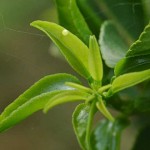
The eggs are laid on the fresh new growth of citrus – small, single lemon-yellow and round. The eggs hatch into ravenous black and orange caterpillars. The markings change as the caterpillar matures. When disturbed, they can arch up and extend a flexible, orange coloured forked gland called an osmeterium which can squirt a fluid with a mildly offensive odour of rotting citrus.
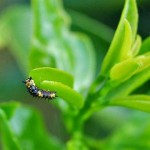
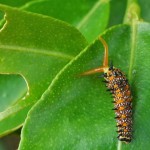
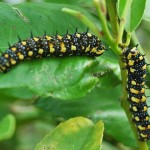
Although the caterpillars are quite conspicuous, their chrysalis stage is so well camouflaged they are easy to miss. The caterpillars pupate in the trees upon which they have fed, matching the colour and markings on the chrysalis to blend in to the anchoring branch. I have seen them in various shades from green to brown and an exact match to the surrounding citrus branches.
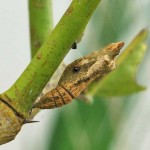
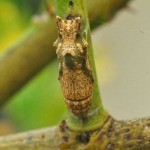
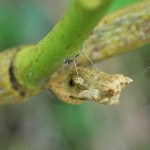
More information on the Dainty or Dingy Swallowtail can be found at http://lepidoptera.butterflyhouse.com.au/papi/anactus.html
